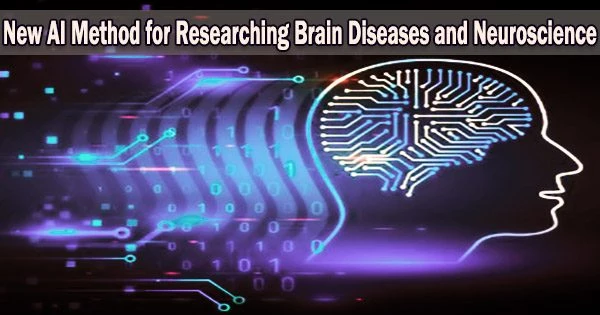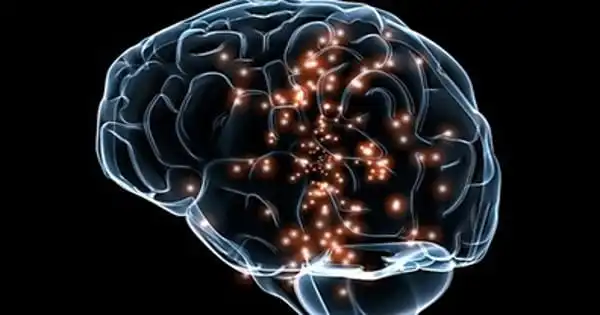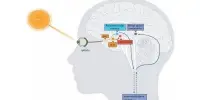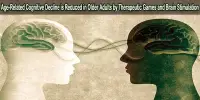In order to undertake neuroscience and disease research for ailments like dementia, Alzheimer’s disease, and other cognitive disorders, a recent study demonstrates how artificial intelligence (AI) is a potent new paradigm.
This new research was led by Andrew McKenzie, MD, PhD, Co-Chief Resident for Research in the Department of Psychiatry at Icahn Mount Sinai, in collaboration with scientists affiliated with the Boston University School of Medicine in Boston, UT Southwestern Medical Center in Dallas, University of Texas Health Science Center in San Antonio, and Newcastle University in Tyne, United Kingdom.
“To pave the way towards better prevention and treatment options for age-related cognitive impairment, there is an urgent need to identify the structural features of brain microanatomy that are robustly associated with the condition using unbiased assessment protocols,” the researchers wrote. “One approach to identifying structural correlates of cognitive impairment is to perform clinicopathologic correlation in postmortem human brains.”
The most prevalent form of dementia, Alzheimer’s disease (AD), is a neurodegenerative condition that gradually kills brain cells. It is characterized by changes in the brain, including amyloid plaques and tau neurofibrillary tangles, which can affect a person’s memory, cognition, and ability to live independently.
Globally, an estimated 47 million people are living with Alzheimer’s disease (AD), a figure that is expected to reach 76 million by 2030 according to the Alzheimer’s Association. It is still unclear what causes Alzheimer’s disease and other cognitive impairments specifically.
In the U.S. alone, there are 5.8 million Americans with Alzheimer’s disease, of which two-thirds are women according to a report by AARP and the Women’s Alzheimer’s Movement (WAM). By 2050, the number of Americans living with Alzheimer’s disease is projected to reach 16 million according to the Harvard NeuroDiscovery Center at Harvard Medical School.
Our results demonstrate a scalable platform with interpretable deep learning to identify unexpected aspects of pathology in cognitive impairment that can be translated to the study of other neurobiological disorders.
The goal of artificial intelligence, a branch of computer science, is to give machines the ability to carry out functions of the human brain like cognition, learning, and problem-solving.
A subset of artificial intelligence called machine learning refers to the ability of computer systems to carry out tasks without explicit, hard-coded instructions. Advances in deep learning’s pattern recognition abilities, a type of machine learning whose deep neural network design is substantially modeled after the biological brain, are largely responsible for the widespread adoption of AI.
The process of teaching AI deep learning algorithms with labeled data is referred to as supervised learning. Supervised learning is typically used for classification and regression.
To conduct the study, the team used a weakly supervised AI deep learning algorithm and a combination of Python, Pytorch, R, ggplot2, NVIDIA v100 GPUs, and the ImageNet database.
They specifically used slide imaging of autopsy tissue from the human brain from over 700 donors to determine whether there were any evidence of cognitive impairment. They then reused an existing AI classification termed clustering-constrained-attention multiple-instance learning (CLAM).
The artificial intelligence (AI) was trained to recognize regions in the brain samples where Luxol fast blue (LFB), a copper-based dye, has been reduced. To identify myelin in the brain under light microscopy for neuroanatomical study, luxol fast blue staining is a widely used dye.
The fatty layer of myelin that covers the nerve fibers known as axons is what gives white matter in the brain its characteristic white color. Action potentials can move down the axon more quickly with myelination than they can without it. Since most of its neuronal cell bodies have unmyelinated axons, gray matter is gray in color.
By coloring the abundant lipoproteins in myelin sheaths blue, the LFB stain makes it possible to distinguish between white matter and gray matter in sections of brain tissue. Multiple sclerosis (MS), traumatic brain damage, and other illnesses and disorders can all result in demyelination. The researchers trained two sets of models across 10 folds of cross-validation.
“While the models have modest accuracy as a pure classification task, in both brain regions the classification accuracy was significantly greater than chance, suggesting that the models have utility for the inference of pathophysiology,” wrote the researchers.
“Our results demonstrate a scalable platform with interpretable deep learning to identify unexpected aspects of pathology in cognitive impairment that can be translated to the study of other neurobiological disorders,” the researchers concluded.
















